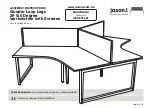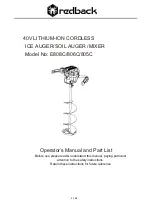
GE M
EDICAL
S
YSTEMS
- K
RETZTECHNIK
RAFT
V
OLUSON
® 730P
RO
/ 730P
RO
V (BT´04)
D
IRECTION
KTI105947, R
EVISION
2
S
ERVICE
M
ANUAL
5-12
Section 5-2 - General Information
5-2-4-1-1
Special B Mode Techniques
a.)
HI
(Coded Harmonic Imaging)
In one method of HI the RX-Frequency is doubled, so that the radial resolution is increased
due to the higher RX-Frequency.
The second method of HI is pulse-inversion: 2 TX-Beams are shot to the same Tissue-location,
one with positive, one with negative polarity. The subtraction of both shots (Subtraction Filter)
brings to bear the nonlinear-echo-reflection-properties of the tissue (especially in usage of
Contrast-medias), which is very useful with extremely difficult-to-image patients.
b.) FFC (Frequency and Focus Composite)
2 or more TX-Beams are shot to the same Tissue-location. The Beams have different TX-foci.
By means of Blending (adaption of Brightnesses) they are composed to one whole RX-Line.
c.) XBeam-CRI (CrossBeam - Compound Resolution Imaging)*
Does not need any special functions of CRS.
Image is composed of more than one different-direction-steered images. PC-calculated.
5-2-4-2
M-Mode
1.) CRS
see:
5-2-4-1 B-Mode
2.) CPR
see:
5-2-4-1 B-Mode
3.) CKV - DMA section
B-mode-Data from CRS is written via SP0 into SDRAM Fifo Buffer memory.
DMA Controller 1 transfers the data into PC main memory where scan conversion is performed per
software, i.e. the sweep image is generated (scaling and interpolation between lines).
CineMode: CineMode-Memory is the PC main memory.
CineMode with ECG: CineMode-Memory for the ECG-Curve is inside PC-Memory.
Software has to take care that M-Mode-Image and ECG-Curve are placed exactly one upon the
other, means: have the same Cine-Shift.
4.) CKV - Video section
see:
5-2-4-1 B-Mode
















































